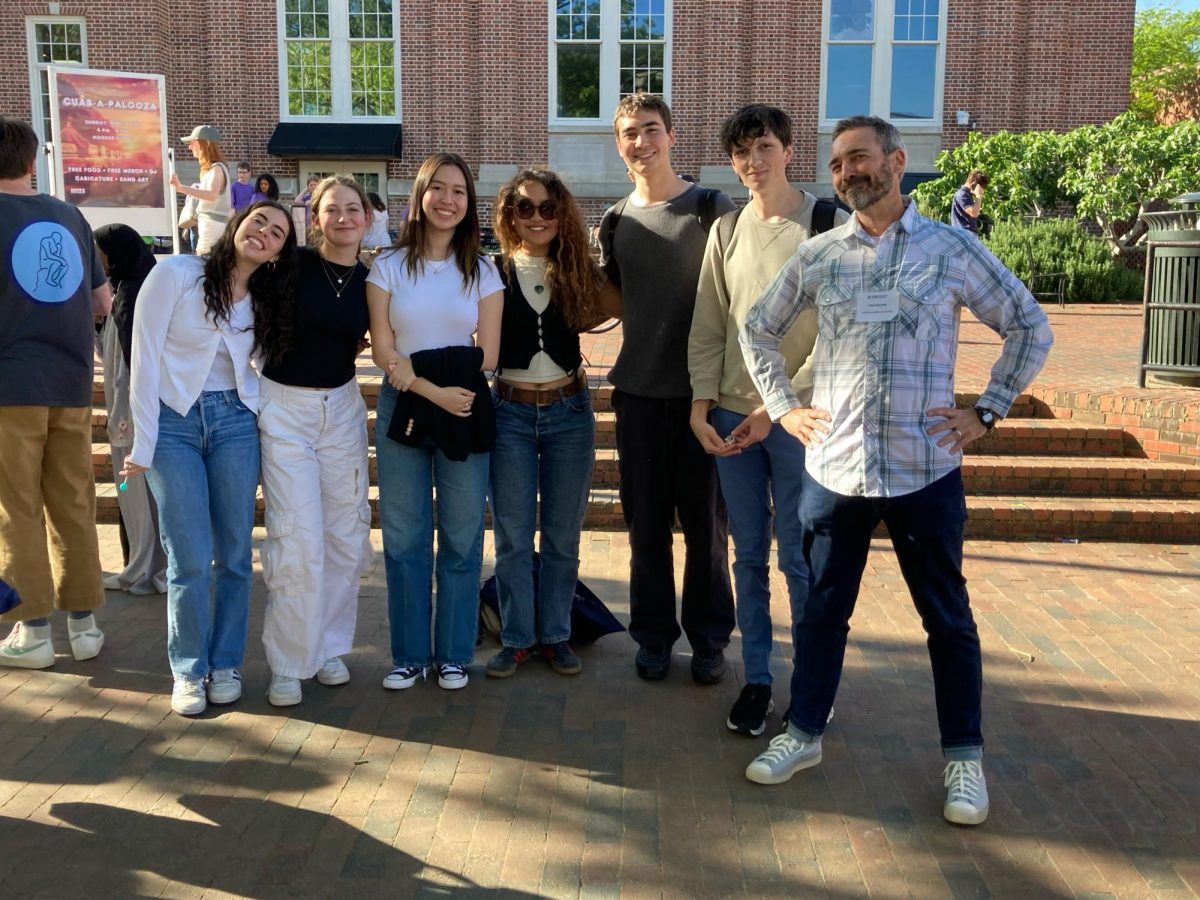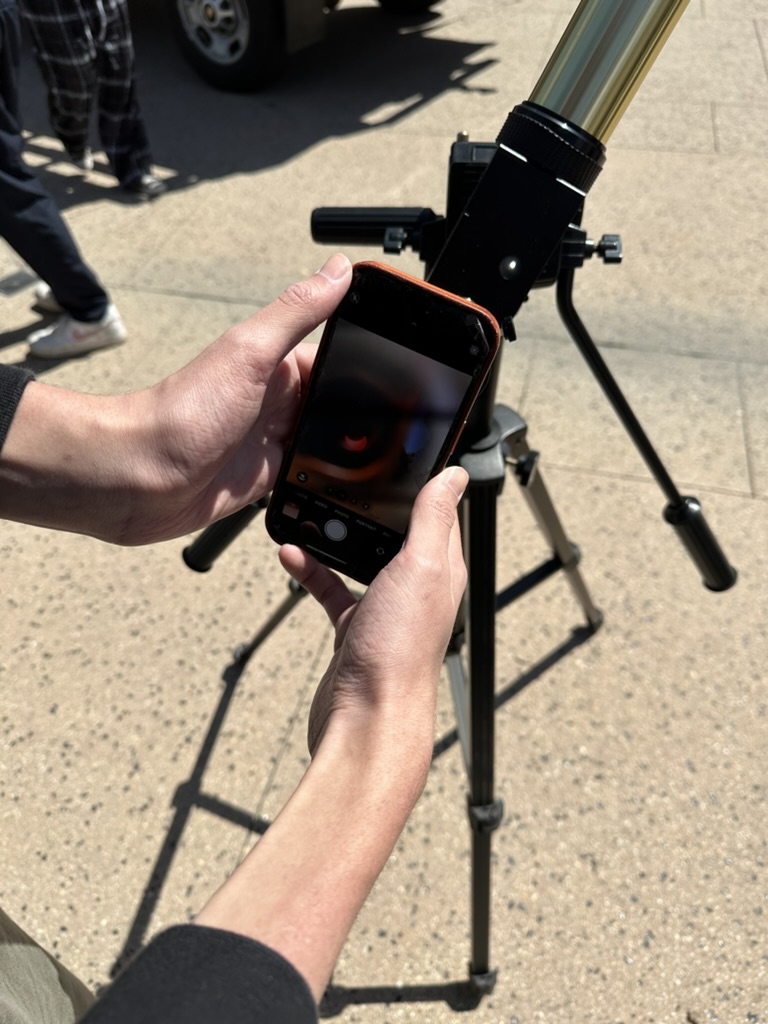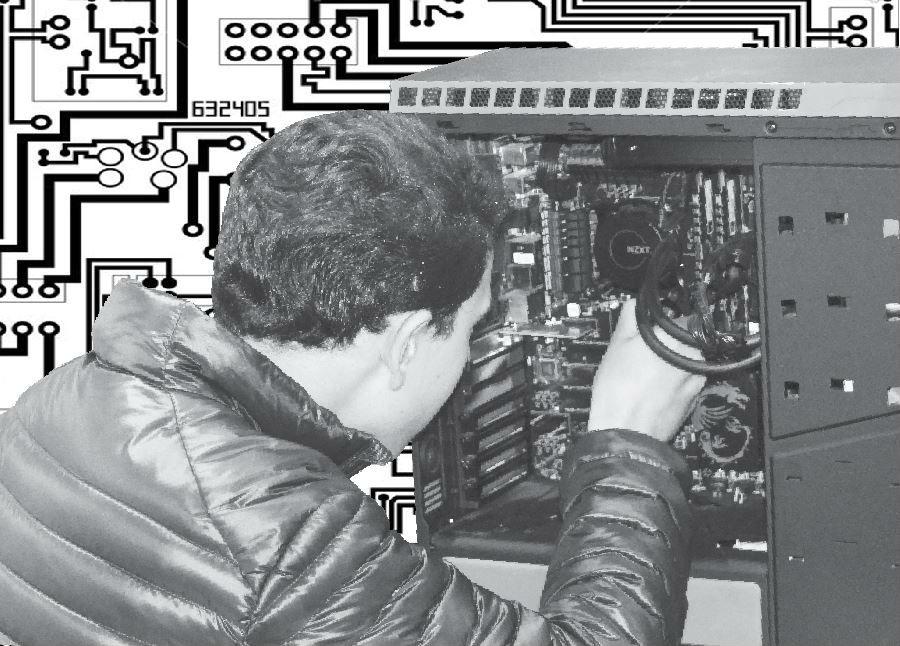In the summer before his sophomore year, Jacob Gold’s ’15 laptop died and he needed a new computer. Instead of getting the latest Macbook, Gold decided he wanted to be able to play the latest games on the highest graphics settings, so he chose to build his own computer instead.
“It was a cheaper and powerful alternative to buying a computer from some big manufacturer that would probably have stuff I was paying for but didn’t need,” Gold said.
Building a PC from scratch begins with determining exactly which components one needs. Necessary components include a motherboard, the piece that connects all the parts together, the computer processing unit, which handles the bulk of the calculations of the computer, random access memory, which allows the computer to access important information for the open programs, a graphics processing unit, which renders the graphics in games, a power supply unit, which powers the PC, and a storage drive for long-term storage of data.
Additionally, builders pick out a case to store it all in, and typically fans to cool the computer during use. The builders also need to buy peripherals such as a mouse, keyboard and at least one monitor.
Most users buy parts on Amazon.com or Newegg.com, a website known for its supply of computer parts. Once parts are all shipped, then it is time to build. While it is seemingly scary to work with parts worth hundreds of dollars, most students do not find the building very difficult.
“The actual building of the computer was the easiest part,” Gold said. “Except for one point when I managed to short the button system on the front of the case, but they sent me a new one through express mail without even asking for a serial number or any kind of proof.”
Gold, and most students who build computers, learn how to do so from a combination of online videos and any friends that have built computers in the past. Typically, students build their computers to be able to run games on the highest graphic setting.
“There are lots of games that just run better on PC,” said Brandon Kuwada ’16, who built his computer with David Ozen ’16 about a year ago. “I really like the better graphics on PC games compared to consoles, and being able to play League of Legends.”
Typical new computers built to play the latest, graphics intensive games such as “Grand Theft Auto V” and “The Witcher 3” cost around $800 to $2,000, with the most expensive part being the GPU at around one third of the total cost. For example, Ozen’s build cost around $1,500, whereas a prebuilt similarly priced computers on ibuypower.com costs $1,929 before tax.
“I liked watching the graphics card being clicked into the computer,” Kuwada said. “It’s at the core of the build and is definitely the most expensive part of my computer.”
In addition to gaming, students use their computers to be more productive. For example, Ozen uses his computer to run the Adobe Suite, which can take advantage of a powerful GPU.
“I like being able to actually do work on something like Microsoft Word while waiting for games to start,” Kuwada said.
Custom-built computers are not just part-for part-cheaper, but due to the ability to customize, custom computers are what the builder wants them to be.
“One reason why I built rather than bought my computer was because when building my computer I can customize all the parts while prebuilt often have different models that limit the parts you can use,” Ozen said.
Builders can also overclock the components, which sends a part of the computer more power, making it perform better, but also use more power and release more heat.
Builders typically overclock their CPU and GPU later in their computer’s life cycle to keep up with the higher demands of newer programs, without having to replace parts in their computer. Pre-built computers typically disable this feature. Still, most students who build their own computers still own laptops for schoolwork.
In addition to building his own computer and helping Kuwada and three other friends build theirs, Ozen is a co-head of the Hardware Engineering Club, along with Harold Chong ’16.
“I started the club with [Chong] to bring computers to the classroom of needy schools so underprivileged children can utilize online tools to aid in learning or use the computers to learn skills such as coding,” Ozen said.
Ozen hopes to continue this tinkering aspect of his life in his career down the road.
“I would love to work in an electronics or computer-based field, but I do not know the opportunities available for builders,” Ozen said. “My interest in computer building has definitely made me interested in possible pursuing a major in college that would set me up for a job in electronics.”





































